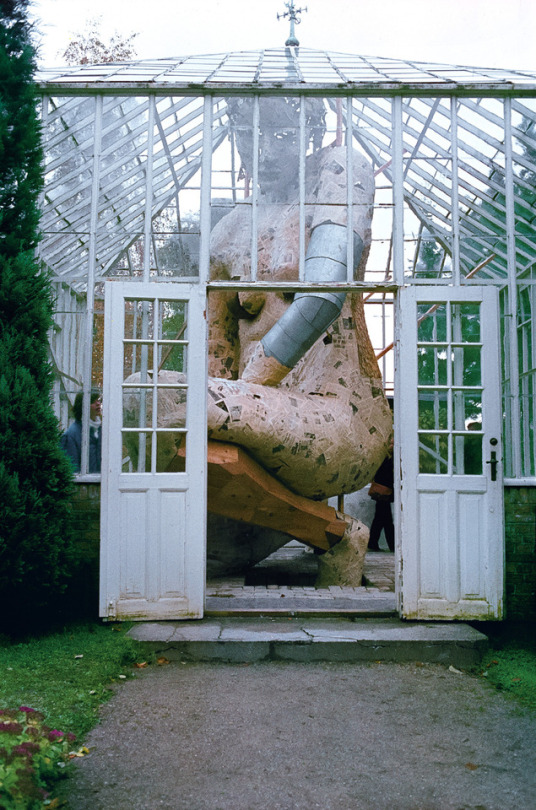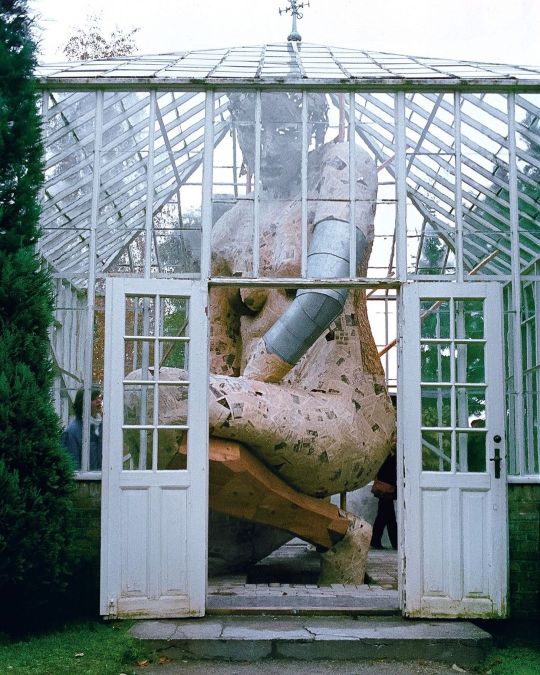#Susanne Ussing
Text

Susanne Ussing: 'I Drivhuset' (1980)
Installation by Danish visual artist and architect Susanne Ussing, that was installed at the Ordrupgaard Museum in Copenhagen. The sculpture depicts a female figure who has seemingly grown too large for (or has become trapped by) a very tall glass greenhouse.
6K notes
·
View notes
Text

Susanne Ussing, I Drivhuset Ordrupgaard.
271 notes
·
View notes
Text


SUSANNE USSING – AN EXHIBITION IN THE MIDSTREAM BETWEEN DREAM AND PROSAIC REALITY
In August, Den Frie Centre of Contemporary Art opens its doors to a major solo exhibition of the work of the artist and architect Susanne Ussing.
Zooming in on selected works in Susanne Ussing’s extensive oeuvre, the exhibition puts her significant contribution to both art and architecture into perspective. Susanne Ussing died in 1998, aged just 57, and her diverse range of sensory, spatial, poetic and political works have never been shown together before. This is something visitors can now experience at Den Frie Centre of Contemporary Art, where the exhibition programme for 2014 – to celebrate the current extension and 100th anniversary of the art space – focusses on the relationship between art and architecture.
The architect Carsten Hoff, Susanne Ussing’s long-term partner privately and professionally in the architecture firm Ussing & Hoff, has opened Ussing’s collection of posthumous works for the first time, making it possible for the exhibition at Den Frie Centre of Contemporary Art to focus on issues that have renewed relevance today, with the increasing dominance of cross-over culture in the works of artists and architects.
With architectural projects like Thy Camp, sensory exhibitions for children, and a long series of projects in public space, Susanne Ussing was a pioneer of her age, open to the currents surrounding her, yet highly independent. Her life’s work includes a wide range of media, materials and artistic modes of expression characterised by a rare curiosity, poetical sensibility and desire to explore materiality. Her works range from ceramics, sculpture and installation, to collages, drawings and architecture, often of a highly experimental and visionary nature.
Susanne Ussing was not limited by conventions and boundaries, like those between visual art and social design, or social housing and public art commissions. She was also not afraid to embark on projects that were not seen as politically correct at the time, like her window designs at the fashion store Nørgaard, which did not fit the contemporary women’s movement’s view of the fashion industry as male dominated and oppressive of women. But for Susanne Ussing something very different was at stake: Art, architecture and how they could be integrated in society and generate meaning.
Susanne Ussing worked continuously to understand, contextualise and communicate the need to find new ways to relate to artistic expression and human interaction. The solo exhibition at Den Frie Centre of Contemporary Art explores these aspects of Ussing’s work, which in researching spatiality and the development of materials locates her both in her own era, but also underlines her renewed relevance in a contemporary context.
The exhibition is curated and developed by Carsten Hoff and Dola Bonfils in collaboration with Den Frie Centre of Contemporary Art.
0 notes
Text

Susanne Ussing, I Drivhuset, installed at Ordrupgaardsamlingen, 1980, wood, newspaper, metal chimney vents
0 notes
Photo
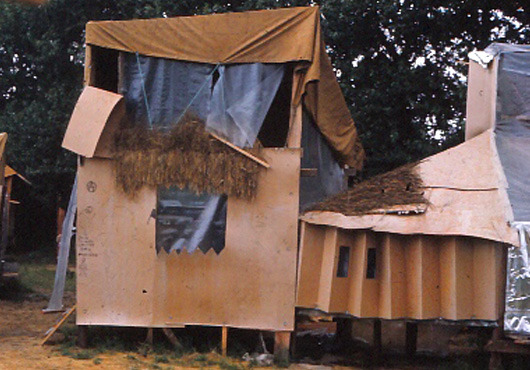
Vejlø ølejr 1971 – 73 by Susanne Ussing
#susanne ussing#perse#fashion#style#photography#film photography#art#artist#design#designer#Architecture#sculpture#house#nature#1970#70s
57 notes
·
View notes
Photo

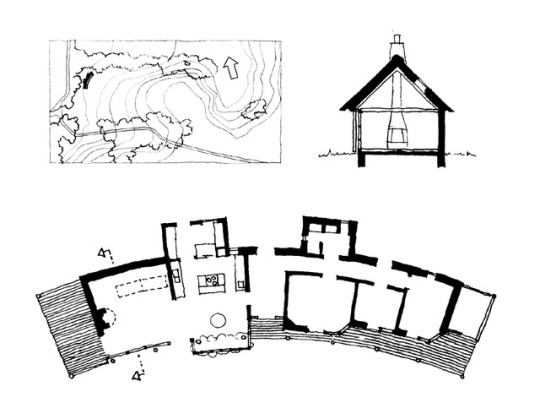
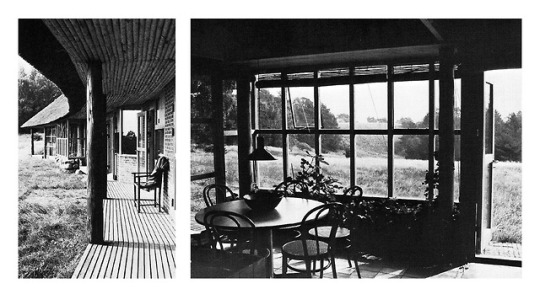

Summer residence at Silkebjerg, 8
Tisvildeleje, Gribskov, Denmark; 1975
Susanne Ussing, Carsten Hoff
see map
via "Bauen + Wohnen" 33 (1979)
#architecture#arquitectura#architektur#architettura#susanne ussing#carsten hoff#holiday house#house#haus#wohnhaus#casa#tisvildeleje#tirbike#gribskov#denmark#danish architecture
37 notes
·
View notes
Photo

Susanne Ussing and Carsten Hoff, Thy Camp, The New Society, 1970. Susanne Ussing (November 29, 1940 – March 8, 1998) was a Danish artist, architect and ceramicist. The feminine world fascinated her. In 1988 she won the Nykredit Architecture Prize and in 1989 she received the Eckersberg Medal. Her activities encompassed exhibitions, teaching and experimental buildings and coincide with the advent of Victor Papanek in Scandinavia. Most notably they arranged provocative multi-sensory exhibitions in established museums, set up teaching facilities outside the academy and did a three-month building experiment using cheap and accessible materials like scaffolding, armoured plastic tarpaulin and cardboard in ‘the new society’ camp in Thy, Jutland. In the discourse accompanying the activities of the duo themes of objects and buildings as catalysts of emancipation and new ways of living predominate. The concept of ‘miljø’ [environment] was key in capturing the totality of the social life to reform and the result of the reformed social life. At this point ‘miljø’ thus could be said to point both back and forth in relation to design in a Danish context." https://www.instagram.com/p/CFkjaEtgvqo/?igshid=1o9bcoswpypz7
37 notes
·
View notes
Photo

Susanne Ussing, I Drivhuset, installed at Ordrupgaardsamlingen, 1980, wood, newspaper, metal chimney vents
7 notes
·
View notes
Photo
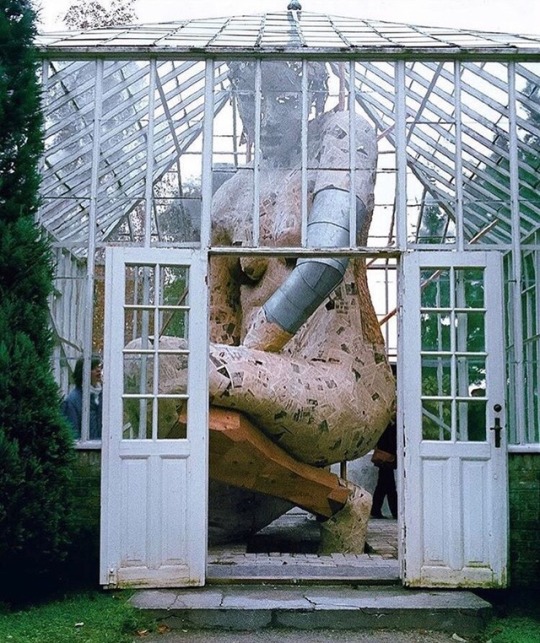
"1. Last year the doctor told me that this kind of sadness is inherited. That they have discovered that sometimes it skips a generation. That the darkness inside me did not grow from nowhere it came from somewhere. I thought to myself, that there is a reason why I have always thought my heart was an attic where I hid pieces of myself. Pieces no one ever wanted. 2. The first boy I ever chose to show this sadness to decided to take it from my attic heart and planted it inside my soul instead. It was easy for him. My soul was a garden I showed him too soon. And he decided that meant he was allowed to take anything he wanted to. 3. Every man who has dared to love me since, has stared at this dark ivy covered soul like it is a haunted house, and I have never tried to explain the thing I have always known. Because men do not have to learn how to open their own selves and lock themselves up again. They are taught to be themselves and the world will accept them better that way. We are taught to break our bodies to be loved. We are taught to confuse sex and love. 4. I knew a girl whose father left her and she took all of her love for him and ate it to comfort herself. People joked how she lived in the kitchen. No one saw her tears when she ate. 5. A friend once told me that she locked herself inside the closet when her parents fought because her father beat her mother and she wished herself into the wood, just so she knew what it was like to be an inanimate object that couldn’t hear or feel anything. 6. My mother told me, that it is the way of the world for girls to grow into women by locking secrets inside themselves. Till now I still imagine every woman I have ever met as a big beautiful house. Full of secret rooms, hiding places, once filled with innocent laughter and joy. Now slightly sad and forgotten because of all those lost places inside them full of secrets." -Nikita Gill, The House Inside Her artwork by Susanne Ussing
208 notes
·
View notes
Photo

Same! Because I feel like bursting out of my cage!🏠 “In the Greenhouse”, Susanne Ussing, 1980. Artist Susanne Ussing (1940–1998) was a Danish visual artist and architect who worked in a variety of different mediums from photography and ceramics to large-scale installations and sensory exhibitions. One of her most impactful pieces was this 1980 installation titled I Drivhuset (In the Greenhouse) that was installed at the Ordrupgaard Museum in Copenhagen. The sculpture depicts a female figure who has seemingly grown too large for (or has become trapped by) a very tall glass greenhouse. Constructed from newspaper clippings, wood, and metal chimney vents, the figure is so large that her feet seem to penetrate the brick floor below. If Colossal had a physical manifestation, I imagine it would look almost exactly like this. https://www.instagram.com/p/B_X_odCpEXE/?igshid=1wffe9amyc5yz
0 notes
Photo
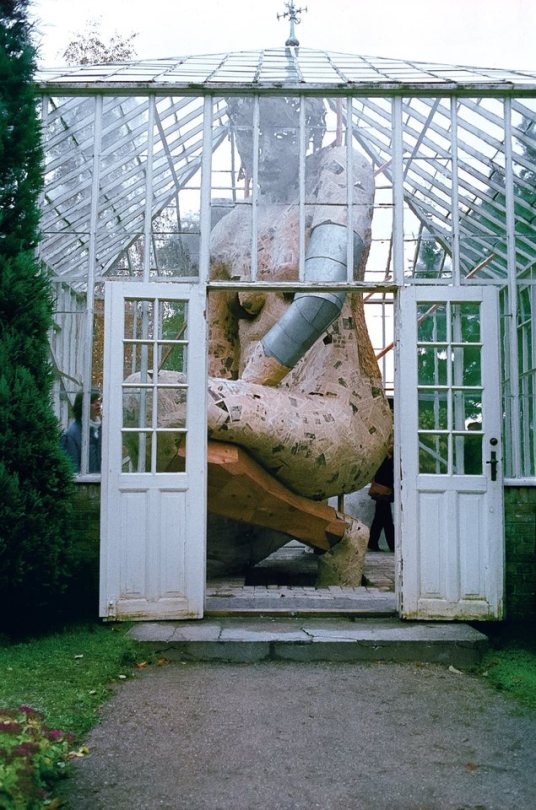
Susanne Ussing (Danish, 1940–1998, b. Frederiksberg, Denmark) ~ I Drivhuset (In The Glasshouse), Installed in Ordrupgaardsamlingen, Denmark, 1980 Mixed Media: Granite, Newspapers, Metal, Wood, Porous Materials
125 notes
·
View notes
Photo

Susanne Ussing, Copenhagen 1980
#Susanne Ussing#perse#fashion#style#photography#film photography#art#artist#design#sculpture#room#installation#copenhagen#1980#80s gifs
313 notes
·
View notes
Photo
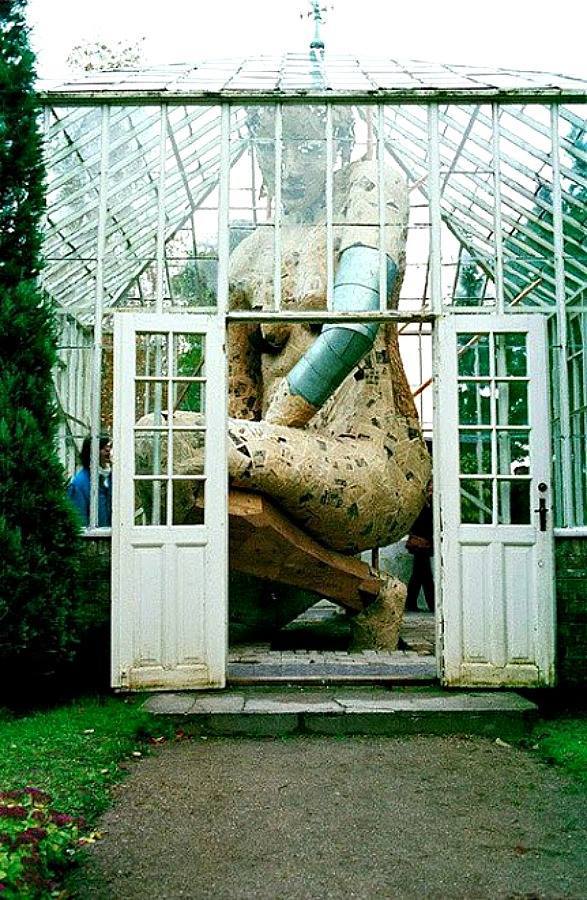
Susanne Ussing, I Drivhuset, installed at Ordrupgaardsamlingen (In the Glasshouse), Denmark,1980
16 notes
·
View notes
